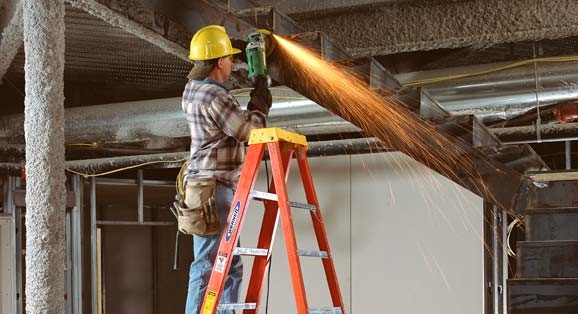A construction site is defined as any place where a building is undergoing repair or being built. As you can imagine, this work requires the use of heavy machinery and large tools, working at height and exposure to hazardous materials. Construction sites can be dangerous environments and the industry has the most fatal injuries. The risks present depend on the work being carried out. Working with asbestos for example will present different challenges to those in working at height.
Height
Between 2015 and 2016, over a quarter of all construction fatalities were from falls form height, making it the most common cause of death to construction workers.
As a result, training is required for all those who must work at height. This includes training on different equipment and surfaces, such as scaffolding, rooftops and ladders.
All height working must be risk-assessed and then have a plan drawn up for the safest methods of completing the job. The employee must be correctly trained and know safety procedures for working at height.
Moving
Construction sites are hectic and always changing with many moving objects. These could include lifting equipment, diggers, cranes, supply vehicles and cement mixers all moving around on generally uneven surfaces. All workers must wear Personal Protection Equipment including high visibility clothing so they can be easily seen. Vehicles should have lights, beepers and a Buggy Whip to increase visibility. Find out more about a Buggy Whip for your vehicle at WISUK.
Slips and Falls
These can occur anywhere but with the uneven terrain and amount of unused materials, trips and falls are a common hazard. Each year, thousands of workers are injured unnecessarily following a fall. These injuries can be prevented by ensuring areas of work, stairs and access routes are kept clear at all times.
Manual Handling
With this type of work, materials are always being lifted and transported around the site, whether manually or by using machinery. Handling has a certain level of risk and any manual handling should come with training beforehand. Any use of lifting equipment must also involve training and if necessary, testing and certification to prove safe usage.
Asbestos
This building material of yesteryear is made up of six different fibrous minerals that occur naturally. Left undisturbed, asbestos isn’t a problem, but when it’s moved, fibres release into the air and possibly inhaled by workers. Over time, the inhalation can cause diseases such as asbestosis and lung cancer. Shockingly, asbestos kills approximately 5,000 workers a year and it is thought half a million public buildings in the UK contain asbestos. Workers must be trained on how to recognise it and what they should if they find it.
Electricity
Exposure to live electricity can be fatal, whether touching live parts or through a conductive material. There are around 1,000 electrical incidents at work each year, mainly from contact with underground or overhead power cables and machinery. Electric shocks also account for many resulting falls from ladders or scaffolding.

